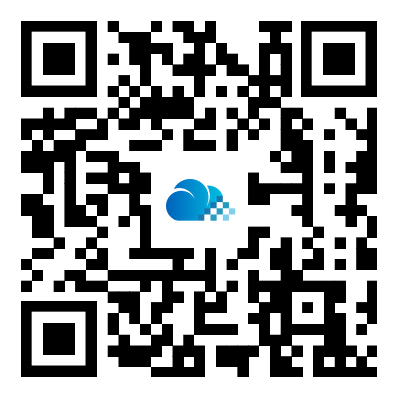How Can a Paperless Meeting System Improve Efficiency and Sustainability?
2024-12-24
In today's fast-paced, environmentally conscious world, businesses are constantly looking for ways to streamline operations while reducing their environmental impact. One effective way to achieve both goals is by adopting a paperless meeting system. But how exactly can this innovative solution improve efficiency and sustainability within an organization? Let’s take a closer look at the benefits of going paperless in meetings and how it can revolutionize the way teams collaborate.
What Is a Paperless Meeting System?
A paperless meeting system refers to the use of digital tools and technologies to conduct meetings without the need for printed materials. Instead of handing out paper agendas, reports, and notes, all meeting-related documents are shared electronically via devices like laptops, tablets, or smartphones. These systems typically involve software that enables participants to view, annotate, and collaborate on meeting materials in real-time, making the entire process more efficient and environmentally friendly.
How Can a Paperless Meeting System Improve Efficiency?
1. Faster Distribution of Materials
Gone are the days of printing, photocopying, and distributing paper documents to attendees before or during a meeting. With a paperless meeting system, documents can be instantly shared with all participants at the click of a button, ensuring that everyone has access to the same information simultaneously. This eliminates delays and ensures that everyone is on the same page right from the start.
2. Real-Time Collaboration
Paperless meeting systems often come with features that allow real-time collaboration on documents. Participants can make annotations, suggest changes, and highlight important points as the meeting progresses. This eliminates the need for back-and-forth exchanges after the meeting and ensures that all feedback is captured and stored in one central location, making the follow-up process more streamlined.
3. Better Organization of Information
In a traditional paper-based meeting, it’s easy for documents to get lost, misplaced, or disorganized. A paperless system eliminates this issue by storing all meeting materials in digital form. Participants can quickly search for past agendas, minutes, or action items, reducing the time spent digging through piles of paper to find important documents. This also makes it easier to track decisions and outcomes over time.
4. Improved Time Management
Without the need to distribute physical materials, meetings can be started and ended on time, without unnecessary delays. Participants can focus on the content and discussion, rather than having to worry about passing out printed handouts or managing paper-based notes. The streamlined flow of information also leads to more focused and productive discussions.
5. Simplified Record-Keeping and Follow-Ups
Paperless meeting systems often include tools for automatically generating meeting minutes or action items, which can be shared with attendees immediately after the meeting. This ensures that everyone is clear on their responsibilities and deadlines without the need for additional emails or paperwork. All records are stored digitally, making it easy to refer back to past meetings and track progress.
How Does a Paperless Meeting System Contribute to Sustainability?
1. Reduction in Paper Waste
The most obvious environmental benefit of a paperless meeting system is the significant reduction in paper waste. By eliminating the need to print agendas, reports, and minutes, organizations can dramatically cut down on their paper consumption. This not only helps preserve natural resources but also reduces the environmental impact of paper production and disposal.
2. Lower Carbon Footprint
In addition to reducing paper waste, a paperless meeting system also helps reduce a company’s carbon footprint. Fewer paper products mean less energy is consumed in the manufacturing, transportation, and disposal processes. Furthermore, digital tools allow teams to connect remotely, reducing the need for travel and further cutting down on emissions.
3. Cost Savings
By going paperless, organizations can reduce costs associated with printing, paper, and office supplies. These savings can be redirected into other areas of the business, such as investing in better technology or supporting sustainability initiatives. In the long run, the cost of a paperless meeting system can pay for itself through these operational savings.
4. Less Storage Space Needed
Storing paper documents often requires large filing cabinets or physical storage space, which can take up valuable office real estate. A paperless system allows all meeting materials to be stored digitally, freeing up physical space and reducing the need for expensive office storage solutions.
What Are the Challenges of Implementing a Paperless Meeting System?
While the benefits of a paperless meeting system are clear, there are some challenges to consider during the transition:
1. Technological Barriers
Not all organizations have the necessary infrastructure in place to support paperless meetings. Employees may need to be trained on how to use digital tools effectively, and some team members may be more comfortable with traditional methods. Overcoming these barriers requires investment in technology and a commitment to staff training.
2. Security Concerns
Storing meeting materials digitally raises concerns about data security and privacy. Sensitive documents need to be protected with secure access controls, encryption, and backup systems to ensure that the information remains safe from unauthorized access or data breaches.
3. Access to Devices and Internet Connectivity
For a paperless meeting system to be effective, all participants must have access to compatible devices and a reliable internet connection. In some cases, particularly in remote areas or with employees who are not familiar with digital tools, this may present a challenge.
4. Initial Transition Period
The shift from paper-based to digital meetings may take time, especially for teams that are used to traditional practices. There may be a learning curve as employees adjust to new workflows, and some meetings may require a hybrid approach before going completely paperless.



